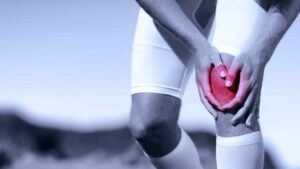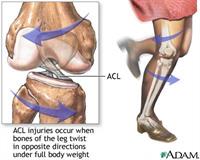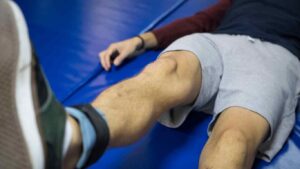Worried About Your Active Child Rupturing their ACL (ligament) in Their Knee? Read How to Reduce Their Risk
Written by Physio, Sam McLaren
 Anterior Cruciate Ligament (ACL) injuries were in the limelight again recently when three AFL players tore their ACL in the opening round of this year- equaling the most in a single round in the 28 years these injuries have been recorded. In the AFLW – superstar Erin Phillips had a second tear in her team’s Grand Final – the sixth for the year for the AFLW. Unfortunately for these players, and the hundreds of Australians who tear their ACL’s playing sport every week – their season of sport is over – with the rehabilitation process taking 9 to 12 months (at least) to return to sport.
Anterior Cruciate Ligament (ACL) injuries were in the limelight again recently when three AFL players tore their ACL in the opening round of this year- equaling the most in a single round in the 28 years these injuries have been recorded. In the AFLW – superstar Erin Phillips had a second tear in her team’s Grand Final – the sixth for the year for the AFLW. Unfortunately for these players, and the hundreds of Australians who tear their ACL’s playing sport every week – their season of sport is over – with the rehabilitation process taking 9 to 12 months (at least) to return to sport.
Recent data also suggests that the rate of ACL injuries is growing, especially amongst our youth. This may have several negative consequences including further pain and dysfunction in later years, as well as reducing sport and exercise participation.
The What/Where/How and Why of the ‘ACL’ – A quick background
 The ACL is a ligament (strong tissue that connects bones together) inside the knee which connects the thigh bone (femur) to the lower leg bone (tibia). It provides stability to the knee (stops the lower leg bone sliding forward and some rotational stability), and also has lots of little special cells inside it that send information subconsciously to the brain to tell it where the knee is and what it’s doing – providing information that helps the body contract muscle groups around the knee, also increasing stability. It is this lack of stability that makes it hard to return to sports that require sudden acceleration and deceleration, change of direction and landing (i.e. football, rugby league, soccer, netball etc.) after injury.
The ACL is a ligament (strong tissue that connects bones together) inside the knee which connects the thigh bone (femur) to the lower leg bone (tibia). It provides stability to the knee (stops the lower leg bone sliding forward and some rotational stability), and also has lots of little special cells inside it that send information subconsciously to the brain to tell it where the knee is and what it’s doing – providing information that helps the body contract muscle groups around the knee, also increasing stability. It is this lack of stability that makes it hard to return to sports that require sudden acceleration and deceleration, change of direction and landing (i.e. football, rugby league, soccer, netball etc.) after injury.
The ACL can be put under stress and rupture under several situations: contact (leg may get twisted and bent awkwardly in a tackle) and non-contact (generally changing direction quickly with the foot planted, or landing on the leg). The non-contact method is quite common and the one that researchers feel may be able to influence the rate of.
In elite sport in Australia, the vast majority of athlete’s will elect to undergo an ACL reconstruction surgery, with various methods and graft types used. In the long term, regardless of whether you elect to have surgery or not, individuals who tear an ACL are at increased of osteoarthritis and disability later in life (particularly if they also injure the meniscus at the same time).
First – The Bad News
 The bad news is that the rate of ACL reconstructions in young Australians are increasing (from 2000-2015). In Australia between 2000-2015, there were nearly 200,000 ACL reconstructions performed, and:
The bad news is that the rate of ACL reconstructions in young Australians are increasing (from 2000-2015). In Australia between 2000-2015, there were nearly 200,000 ACL reconstructions performed, and:
● The annual incidence grew by 74% for those under 25
● Annual growth in incidence was greatest in the 5-14 year old group – 8.8% and 7.7% growth per year! ACL injury in this age group was previously rare.
● Young men (20-24) and women (15-19) have the peak incidence rates (2014-2015)
In another study, from a group of 140 patients under 20, 76% returned to their sport post-operatively, however 65% of those reported they could perform as well as prior to their injury. At a five year follow up, 48% of female and 54% of males were still playing level 1 (jumping, hard pivoting) sports.
The Good News
 The good news is that the risk of non-contact ACL injuries can be reduced with a movement preparation program that focuses on strength, neuromuscular control, practicing movement patterns (stopping and starting, change of direction and landing) and balance. The most studied population around this is the FIFA 11+ program which- when conducted as a warmup before training twice per week- can significantly reduce non-contact injuries by up to 50%.
The good news is that the risk of non-contact ACL injuries can be reduced with a movement preparation program that focuses on strength, neuromuscular control, practicing movement patterns (stopping and starting, change of direction and landing) and balance. The most studied population around this is the FIFA 11+ program which- when conducted as a warmup before training twice per week- can significantly reduce non-contact injuries by up to 50%.
The warm up in this is simple, doesn’t need equipment and can be easily be implemented by team coaches. Whilst most of the studies have focused on soccer, it has also been used by others sports such as basketball to reduce their injury risk.
To find out more about the FIFA 11 program+ Manual, book an appointment with your Physio to discuss and Review this.
There are also several other great programs that have been developed for other sports – again please ask your Physio in clinic for details around these
Netball – The KNEE Program
AFL (Women’s, but would also be great for Men) – Prep-to-Play
 These programs SHOULD become the norm for all recreational and amateur sporting teams – so if your or your child’s team warm up doesn’t look like quite right, then ask your coach if he/she knows about the FIFA11+!
These programs SHOULD become the norm for all recreational and amateur sporting teams – so if your or your child’s team warm up doesn’t look like quite right, then ask your coach if he/she knows about the FIFA11+!
The team at Gold Coast Physio & Sports Health are also highly experienced managing the rehabilitation of ACL injuries from the acute phase right through to the return to sport, and we have the facilities on-site to be able to do so.
Give us a call or simply book online if you would like us to help you return to your sport of choice as strong, confident and fit as possible.
Sam McLaren
Physiotherapist

































